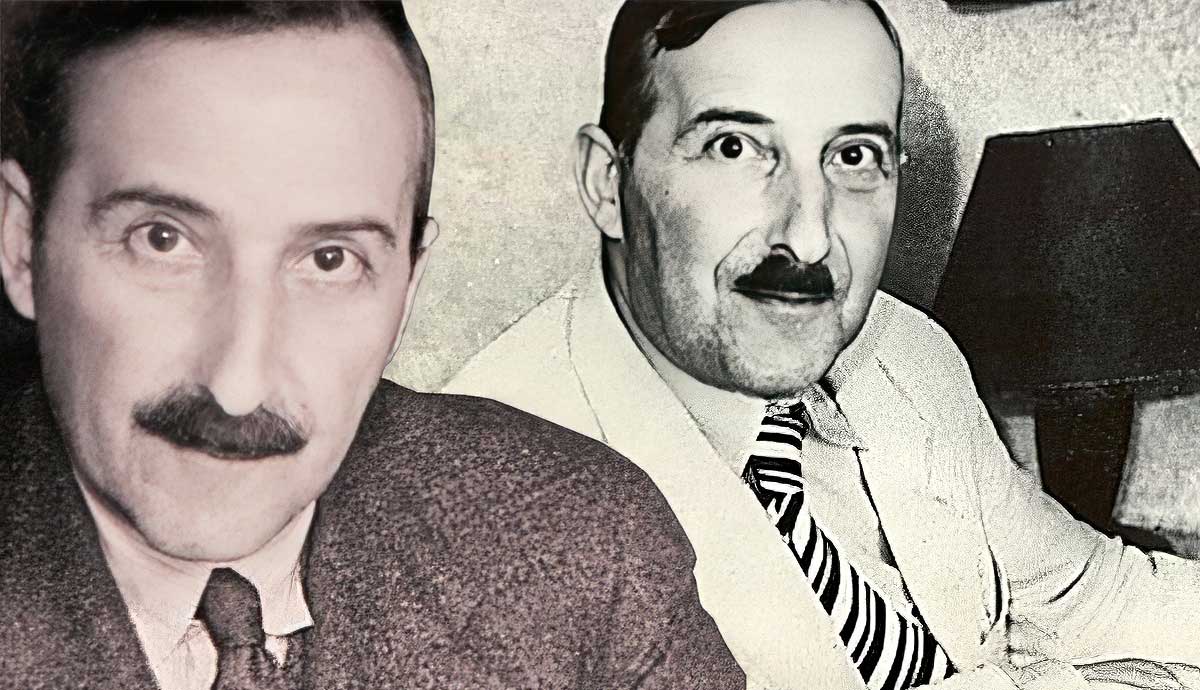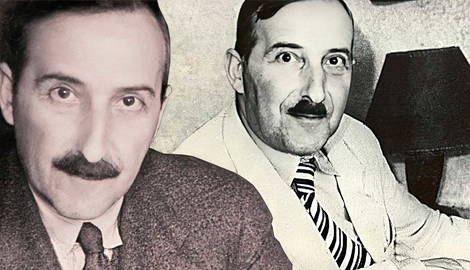
The Austrian writer Stefan Zweig achieved great literary fame during the 1920s and 1930s. Once Hitler came to power, Zweig was forced to flee his home country and start a new life in Brazil. As an avid traveler and lover of European culture, Stefan Zweig found it hard to adapt to a world that seemed to be closing down around him. On the 22nd of February in 1942, he and his second wife died by suicide. Here are 10 things you should know about the famous writer.
Content Warning: This post contains discussions that some readers may find sensitive. Reader discretion is advised.
1. Stefan Zweig Grew Up in Vienna

Stefan Zweig was born in an upper-class Jewish family in the Austrian capital of Vienna. At the time of his birth in 1881, Austria was still a monarchy ruled by the Habsburgs, and Vienna a hotspot for artists and intellectuals. Zweig quickly came to love the literary traditions of his culturally rich home country and developed a particular passion for the theater. This would later lead him to write several plays, such as the anti-war play Jeremias.
2. Zweig Loved the Theater

Although Stefan Zweig is well-known for his literary works including Chess Story, The World Of Yesterday, and Beware Of Pity, he also loved the theater. While he never achieved the same success as a playwright as he did in the realms of fiction and biographical writing, around twelve of his plays were staged in various German and Austrian cities. The most notable of these is a drama titled Jeremias, which delves into the story of the Jewish prophet and the fall of Israel.

Stefan Zweig´s Jeremias advocated for pacifistic values, and premiered in Switzerland during World War 1. What makes this work particularly revolutionary is the fact that it advocated for the values of peace and brotherhood during a time when most European countries were at war with each other.
3. Zweig Was an Extreme Pacifist

Having grown up in a social class that gave him the financial means to travel across major European cities, Stefan Zweig befriended fellow artists across the entire continent. However, once World War I started, many European writers actively participated in the creation of war propaganda. This was extremely traumatizing for Zweig. Despite the mass euphoria surrounding the war, Zweig continued to think of himself as a European citizen above all. While this stance left him incredibly isolated during World War I, it only served to consolidate his pacifist ideals.
4. He Was a Passionate Collector of Autographs And Original Manuscripts

While Zweig achieved literary fame through his writing, he was also a fan of other people’s work. Throughout his life, he invested a lot of time and money in purchasing the autographs and original manuscripts of famous composers, writers, and artists. His collection included Ludwig van Beethoven’s work desk, drawings made by Leonardo da Vinci, manuscript pages written by Franz Kafka, and scores made by composers like Wolfgang Amadeus Mozart.
5. He Wrote a Biography of Marie Antoinette

But Stefan Zweig wasn’t just passionate about collecting manuscripts, scores, and drawings. He was also a collector of stories. Being particularly interested in the lives and psychological traits of famous historical figures, he published books on figures such as Friedrich Nietzsche, Mary Queen of Scots, Casanova, and Marie Antoinette. In his work Marie Antoinette: The Portrait of an Average Woman, Zweig used his fast-paced and highly emotional writing style to draw his readers into a story about the controversial Queen of France.
6. His First Wife Supported Him All the Way Through

Like many male artists of the time, Stefan Zweig relied on the help of his wife to run the house so that he could focus on writing. Friderike Burger, whom Zweig married in 1920, described their domestic life in Salzburg like this:
The most important thing of all was to maintain an atmosphere of peace, to dig trenches around his spiritual castle. As the guardian of his inner world, I was to keep the outer world away, pregnant as it always was with disturbance. Therefore—a fact but seldomly openly confessed—I was to have no world of my own, no work of my own that might possibly deflect me from my watch.
In her memoir, she also mentioned his frequent bouts of depression and anxious mood swings. Nevertheless, her account of the marriage is largely positive and it seems that she enjoyed serving as the peacekeeper of his home. Although the name Friderike Burger will never be as well-known as the name of her famous husband, her unquestionable contribution to Zweig’s artistic output remains important. On top of looking after the household and serving as a hostess whenever famous artists and members of the European intelligentsia visited their home, Friderike also helped Zweig with his research, editing, and proofreading.
7. His Second Wife Was 27 Years Younger Than Him

Around 1934, Stefan Zweig started having an affair with his research assistant and multilingual secretary Lotte Altmann. Three years later, he divorced his first wife and decided to marry his secretary. Lotte was over 27 years younger than him and the divorce was challenging, but Zweig and his first wife remained friends until his death.
There existed such an indestructible friendship between me and my mate that intuitive sympathy with his feelings, never wholly undermined, survived all the conflicts, his first wife Friderike Burger reflected in her memoir.
Lotte Altmann continued to support Zweig´s creative work by keeping his headspace free from everyday worries and serving as his assistant. It is also possible that Zweig´s novel Beware of Pity, which details the emotional turmoil of a young man who feels pressured to marry a bedridden woman, was partly inspired by Lotte, who suffered from asthma.
8. His Books Were Burned by the Nazis

Stefan Zweig’s literary output spans over 60 books which were translated into several languages. While he enjoyed great fame in the 1920s and 1930s, the rise of Hitler put a stop to his life as a member of the elite in Austrian society. During the book burnings of 1933, Nazi supporters burned and confiscated many of Zweig’s books, proclaiming them as un-German. Following the equally traumatic experience of having his house in Salzburg searched by the authorities, the writer decided to flee Austria. Thanks to his international readership, the writer continued to publish new work despite the ban. Nevertheless, the experience of losing his home and his German readership was extremely traumatic.
9. He Ended His Life as a Refugee

Once it became clear that he could not stay in Austria, Stefan Zweig tried to establish a base for himself in the United Kingdom. Ridden by the fear of a German invasion, he crossed the Atlantic and spent a few months in the USA. In the end, he and his second wife Lotte Zweig settled down in the Brazilian town of Petrópolis. Based on the book Brazil: Land of the Future, which Stefan Zweig wrote during his stay there, one might think that all was going well for him there. But as it turned out, the overenthusiastic praise he heaped on the country that had granted him exile only served to cover up the despair of a man who had lost his will to live.
10. Stefan Zweig and His Second Wife Committed Suicide Together

Stefan Zweig had always considered himself a citizen of the world. And yet, the travel enthusiast and writer suffered tremendously when he lost his home in Austria. Being a firm believer in pacifism, freedom of movement, and freedom of thought, he could not bear watching his beloved Europe engage in the most destructive war in history. On the 22nd of February in 1942, the writer and his wife were found dead in their bed. They died by suicide.
In his goodbye letter to his first wife, Zweig stated that he was simply too weak to sustain his suffering. His suicide note stated that he no longer had the strength to start fresh.
The ten facts mentioned above are just the tip of the iceberg when it comes to the life and career of Stefan Zweig. If you are interested in finding out more about the life story of somebody who lived through two wars and experienced both the heights and lows of the human experience, his memoir The World Of Yesterday serves as a great start.










